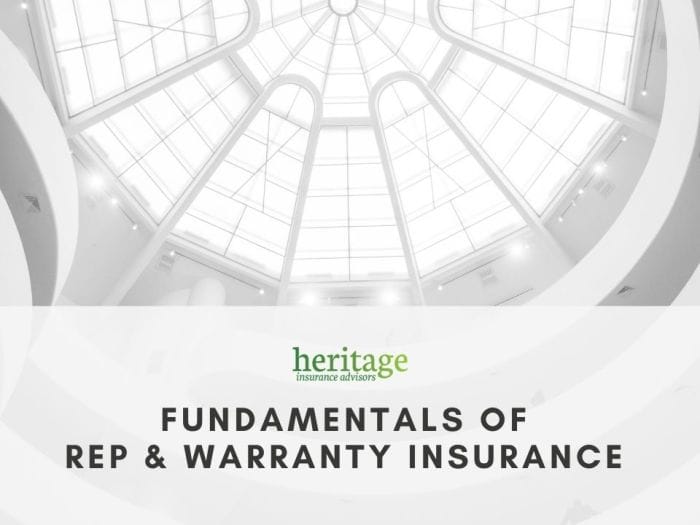In the realm of mergers and acquisitions (M&A), the rep and warranty insurance tipping basket has emerged as a crucial risk management tool, enabling buyers and sellers to navigate the complexities of post-closing disputes. This insurance mechanism offers a safety net against potential breaches of representations and warranties made during the transaction, providing a structured framework for risk allocation and dispute resolution.
The tipping basket serves as a buffer, absorbing a predetermined amount of losses before the insurer’s liability is triggered. By carefully designing the tipping basket structure, parties can strike a balance between risk retention and premium costs, ensuring a tailored solution that aligns with their specific transaction needs.
Rep and Warranty Insurance Tipping Basket Overview
In mergers and acquisitions (M&A) transactions, a rep and warranty insurance tipping basket is a risk-sharing mechanism that allocates the financial consequences of breaches of representations and warranties between the buyer and seller. This insurance policy provides a safety net for both parties, protecting them from unforeseen liabilities that may arise after the transaction is completed.
Representations and warranties are statements made by the seller about the accuracy and completeness of information provided to the buyer during the due diligence process. These statements cover a wide range of aspects, including the financial condition of the target company, its legal compliance, and the absence of any undisclosed liabilities.
By providing this insurance, the tipping basket ensures that both parties have a clear understanding of the risks involved in the transaction and how they will be shared.
Role of Tipping Basket in Allocating Risks
The tipping basket plays a crucial role in allocating risks between the buyer and seller in an M&A transaction. It establishes a threshold amount, known as the “tipping point,” above which the insurance policy will be triggered. If the total value of breaches of representations and warranties exceeds this threshold, the insurance company will be responsible for covering the losses.
This provides the buyer with protection against significant financial losses resulting from undisclosed issues, while also limiting the seller’s liability to the agreed-upon tipping point.
The tipping basket mechanism encourages both parties to conduct thorough due diligence and make accurate representations and warranties. It also facilitates negotiations by providing a framework for resolving potential disputes over liability. By clearly defining the terms and conditions of the insurance policy, the tipping basket helps to ensure a smooth and successful M&A transaction.
Tipping Structure and Design

Tipping is a crucial component of representation and warranty (reps and W) insurance, enabling insurers to limit their liability and manage risk. There are various structures of tippings, each serving a distinct purpose and catering to the needs of different transactions and parties involved.
Understanding the different structures and their implications is essential for effectively structuring reps and W insurance policies and optimizing risk management strategies.
Fixed Tipping Structure
A fixed tippping structure involves a predetermined fixed dollar amount as the tippping point. Once the losses reach or exceed this fixed amount, the insurer’s liability is triggered, and they are required to indemnify the insured for covered losses. This structure provides certainty and predictability for both the insurer and the insured, ensuring that the insurer’s liability is known upfront.
Capped Tipping Structure
A caped tippping structure involves a predetermined maximum dollar amount as the tippping point, known as the cap. In this structure, the insurer’s liability is limited up to the cap amount. Any losses that exceed the cap are borne by the insured.
This structure offers a balance between the fixed tippping structure and the excess-of-loss structure, providing some level of certainty for the insurer while allowing the insured to retain some risk.
Excess-of-Loss Tipping Structure
An excess-of-loss tippping structure involves a predetermined minimum dollar amount as the attachment point. In this structure, the insurer’s liability is triggered once the losses reach or exceed this attachment point. Any losses that fall below the attachment point are borne by the insured.
This structure provides the insurer with more flexibility and control over its risk exposure, as it only becomes liable for losses that exceed the attachment point.
Underwriting and Pricing Considerations

Insurers meticulously evaluate various factors when underwriting rep and warranty insurance policies to assess the risk and determine appropriate pricing. This process involves rigorous due diligence, risk assessment, and a well-defined pricing methodology.
Underwriting is the process of evaluating the risk associated with a potential policyholder and determining whether to issue a policy. The insurer’s objective is to assess the likelihood and severity of potential claims, as well as the overall financial strength of the policyholder.
Due Diligence
Due diligence is a critical aspect of the underwriting process. Insurers thoroughly examine the policyholder’s financial statements, business operations, and management team to gain a comprehensive understanding of the company’s financial health and risk profile.
This process often involves reviewing audited financial statements, management presentations, and conducting site visits to assess the policyholder’s operations firsthand. Insurers also evaluate the policyholder’s industry, competitive landscape, and regulatory environment to identify potential risks.
Risk Assessment
Based on the information gathered during due diligence, insurers conduct a comprehensive risk assessment to determine the likelihood and severity of potential claims. This involves evaluating various factors, including:
- The nature of the policyholder’s business and industry
- The financial strength and creditworthiness of the policyholder
- The quality of the policyholder’s management team
- The policyholder’s track record of litigation and claims history
- The specific representations and warranties being insured
Pricing Methodology
The premium for rep and warranty insurance is determined based on the insurer’s assessment of the risk associated with the policyholder. Insurers employ various pricing methodologies, but common factors that influence pricing include:
- The policyholder’s financial strength and creditworthiness
- The policyholder’s industry and competitive landscape
- The specific representations and warranties being insured
- The policyholder’s claims history and litigation risk
- The overall risk appetite of the insurer
Insurers may also offer discounts or premium adjustments based on the policyholder’s risk management practices, such as having a strong internal control system or a history of prudent financial management.
Claims Process and Dispute Resolution
Rep and warranty insurance policies typically have specific procedures for submitting and resolving claims. These procedures are designed to ensure that claims are handled efficiently and fairly.
Notice Requirements
The policy will typically specify the time frame within which a claim must be submitted to the insurer. This time frame may vary depending on the policy, but it is typically 30 to 60 days from the date the insured becomes aware of the claim.
The insured must also provide the insurer with written notice of the claim, which should include the following information:
- The name of the insured
- The policy number
- The date of the claim
- A description of the claim
- The amount of the claim
Documentation
The insured will also be required to provide the insurer with supporting documentation for the claim. This documentation may include:
- The purchase agreement
- The representations and warranties that were made
- Evidence of the breach of the representations and warranties
- Evidence of the loss suffered by the insured
Role of the Insurer
The insurer will review the claim and supporting documentation to determine if the claim is covered under the policy. If the claim is covered, the insurer will typically investigate the claim to determine the extent of the loss. The insurer may also negotiate with the insured to reach a settlement.
Common Disputes
Common disputes that arise in rep and warranty insurance include:
- Disputes over whether a representation or warranty was breached
- Disputes over the amount of the loss
- Disputes over the insurer’s duty to defend the insured
Methods for Resolving Disputes
Disputes over rep and warranty insurance claims can be resolved through negotiation, mediation, or arbitration. If these methods are unsuccessful, the dispute may be resolved through litigation.
Market Trends and Developments

The rep and warranty insurance market is undergoing significant transformation, driven by technology, regulatory changes, and evolving economic conditions. These factors are shaping the industry landscape, presenting both opportunities and challenges for insurers and policyholders.
One notable trend is the increasing adoption of technology, including artificial intelligence (AI) and machine learning (ML). These technologies are being leveraged to enhance underwriting accuracy, streamline claims processing, and improve overall efficiency. For instance, AI-powered underwriting tools can analyze vast amounts of data to assess risk more precisely, leading to more tailored and competitive premiums.
Impact of Technology
- Enhanced Underwriting: AI and ML algorithms can analyze large datasets, identifying patterns and correlations that human underwriters might miss. This enables more accurate risk assessment and pricing.
- Streamlined Claims Processing: Technology can automate many aspects of the claims process, reducing processing times and improving efficiency. This leads to faster claim settlements and better customer satisfaction.
- Improved Fraud Detection: AI algorithms can detect suspicious claims patterns, helping insurers identify and prevent fraudulent activities.
Comparative Analysis of Rep and Warranty Insurance and Other Risk Transfer Mechanisms

Rep and warranty insurance, along with escrow accounts, holdbacks, and indemnification provisions, are risk transfer mechanisms used to manage potential liabilities arising from breaches of representations and warranties in various transactions, particularly mergers and acquisitions (M&A). Each mechanism offers distinct advantages and disadvantages, and their suitability depends on the specific circumstances of the transaction.
Escrow accounts involve setting aside a portion of the purchase price in a neutral account, held by a third party, until certain conditions are met or disputes are resolved. Escrow accounts provide a degree of security to the buyer, but they can be cumbersome to administer and may not fully protect against all potential liabilities.
Holdbacks
Holdbacks are similar to escrow accounts, but instead of being held by a third party, the buyer retains a portion of the purchase price until certain conditions are met or disputes are resolved. Holdbacks offer the buyer direct control over the funds, but they can also limit the seller’s ability to access the full purchase price promptly.
Indemnification Provisions
Indemnification provisions are contractual clauses that require the seller to compensate the buyer for losses or liabilities resulting from breaches of representations and warranties. Indemnification provisions provide the buyer with a direct legal recourse against the seller, but their effectiveness depends on the financial strength and willingness of the seller to honor the indemnification obligations.
Choosing the Most Appropriate Mechanism
The choice of the most appropriate risk transfer mechanism depends on various factors, including the size and complexity of the transaction, the nature and extent of the representations and warranties provided, the financial strength and reputation of the seller, and the parties’ risk tolerance and negotiating power.
In some cases, a combination of mechanisms may be used to achieve a comprehensive risk transfer strategy.
Case Studies and Practical Applications
The practical applications of rep and warranty insurance are multifaceted, encompassing successful claims, risk mitigation strategies in M&A transactions, and valuable lessons learned from real-world scenarios.
Successful Rep and Warranty Insurance Claims
One notable case study involves a private equity firm acquiring a manufacturing company. Post-acquisition, the buyer discovered material breaches of representations and warranties, including inflated revenue figures and undisclosed liabilities. The rep and warranty insurance policy provided coverage for these breaches, enabling the buyer to recoup significant financial losses.
Mitigating Risks in M&A Transactions
Rep and warranty insurance has proven instrumental in mitigating risks associated with M&A transactions. In a cross-border acquisition, the buyer was concerned about potential liabilities arising from compliance with foreign regulations. The rep and warranty insurance policy offered protection against these liabilities, facilitating a smooth transaction.
Lessons Learned from Case Studies
Case studies offer valuable lessons for future transactions. They emphasize the importance of conducting thorough due diligence, ensuring clear and comprehensive representations and warranties, and selecting an appropriate insurance policy that aligns with the specific transaction risks.
Legal and Regulatory Considerations

Rep and warranty insurance, like other financial products, operates within a legal and regulatory framework that governs its structure, conduct, and practices. Understanding this framework is crucial for insurers, policyholders, and other stakeholders to ensure compliance and mitigate potential risks.
Applicable Laws and Regulations
The legal and regulatory landscape for rep and warranty insurance varies across jurisdictions. In many countries, insurance activities are subject to specific laws and regulations aimed at protecting policyholders’ interests, ensuring financial stability, and promoting market integrity. These laws and regulations typically address aspects such as:
- Licensing and authorization requirements for insurers
- Capital and solvency requirements
- Product design and approval processes
- Underwriting and pricing practices
- Claims handling and dispute resolution procedures
- Reporting and disclosure requirements
These laws and regulations are often enforced by government agencies or regulatory authorities responsible for overseeing the insurance industry.
Impact of Recent Legal and Regulatory Changes
The rep and warranty insurance industry has witnessed several notable legal and regulatory changes in recent years. These changes have been driven by various factors, including the increasing complexity of transactions, heightened awareness of potential risks, and the need for greater transparency and accountability.Some
key legal and regulatory changes that have impacted the industry include:
- Increased focus on consumer protection and policyholder rights
- Heightened scrutiny of underwriting and pricing practices
- Introduction of new regulations governing claims handling and dispute resolution
- Enhanced reporting and disclosure requirements for insurers
These changes have had a significant impact on the industry, leading to increased compliance costs, heightened competition, and a greater emphasis on risk management and governance.
Ensuring Compliance
To ensure compliance with relevant laws and regulations, insurers and other stakeholders involved in rep and warranty insurance should:
- Stay updated with the latest legal and regulatory developments
- Establish robust governance and compliance frameworks
- Implement effective risk management and internal control systems
- Provide clear and transparent information to policyholders
- Handle claims fairly and promptly
By adhering to these principles, stakeholders can mitigate potential legal and regulatory risks, enhance policyholder confidence, and foster a sustainable and responsible rep and warranty insurance market.
Role of Brokers and Advisors

Brokers and advisors play a pivotal role in facilitating rep and warranty insurance transactions, acting as intermediaries between policyholders and insurers. Their expertise and guidance help ensure a smooth and successful transaction process.
Services Provided by Brokers and Advisors
Brokers and advisors offer a comprehensive range of services to assist clients throughout the rep and warranty insurance process:
- Risk Assessment: They conduct a thorough analysis of the transaction, identifying potential risks and liabilities associated with the representations and warranties being made.
- Policy Structuring and Design: They work closely with clients to design a customized insurance policy that aligns with their specific needs and objectives.
- Policy Evaluation: They provide an objective assessment of various policy options, comparing coverage, terms, and conditions to help clients make informed decisions.
- Negotiation: They represent clients in negotiations with insurers, advocating for favorable terms and conditions that protect their interests.
- Placement: They have established relationships with multiple insurers, enabling them to secure competitive quotes and place coverage with reputable and financially sound insurers.
- Claims Assistance: They provide ongoing support during the claims process, assisting clients in preparing and submitting claims, and advocating for their rights in the event of a dispute.
Importance of Selecting Experienced and Qualified Brokers and Advisors
Selecting experienced and qualified brokers and advisors is crucial for a successful rep and warranty insurance transaction. Their expertise and experience can make a significant difference in several key areas:
- In-depth Knowledge: They possess a deep understanding of rep and warranty insurance, including its nuances and complexities.
- Market Access: They have access to a wide network of insurers, enabling them to find the best coverage options for their clients.
- Negotiation Skills: They have the skills and experience to negotiate favorable terms and conditions with insurers on behalf of their clients.
- Claims Expertise: They have experience in handling claims, providing valuable guidance and support throughout the process.
- Risk Management: They can help clients identify and manage risks associated with representations and warranties, mitigating potential liabilities.
By working with experienced and qualified brokers and advisors, clients can navigate the complexities of rep and warranty insurance transactions with confidence, ensuring they receive the protection they need and deserve.
Future Outlook and Opportunities

The future of rep and warranty insurance is promising, with advancements in technology and changing market dynamics shaping the landscape. The emergence of new industries and transaction types presents opportunities for insurers to expand their reach and provide tailored solutions.
Technological advancements such as artificial intelligence and blockchain have the potential to streamline underwriting and claims processes, enabling faster and more efficient transactions. These technologies can also enhance risk assessment and fraud detection, leading to more accurate pricing and better protection for policyholders.
Emerging Opportunities
- New Industries: Rep and warranty insurance can be adapted to new industries beyond its traditional stronghold in mergers and acquisitions. Industries such as technology, healthcare, and real estate are witnessing increased demand for warranty coverage due to complex transactions and the need for risk mitigation.
- Alternative Transaction Types: The rise of alternative transaction structures, such as joint ventures and strategic alliances, has created demand for rep and warranty insurance that can accommodate these unique arrangements.
- Global Expansion: As businesses become increasingly globalized, the need for rep and warranty insurance that can cover cross-border transactions and address diverse legal and regulatory frameworks is growing.
Recommendations for Stakeholders
- Embrace Technology: Insurers and brokers should leverage technological advancements to improve underwriting, claims handling, and risk management. This can lead to more efficient processes, enhanced accuracy, and better customer service.
- Expand Industry Expertise: Insurers should develop specialized knowledge and expertise in emerging industries to effectively assess and mitigate risks. This will enable them to offer tailored solutions that meet the unique needs of different sectors.
- Foster Collaboration: Collaboration among insurers, brokers, and policyholders can lead to innovative solutions that address the evolving needs of the market. Open communication and a shared understanding of risks can result in more effective risk transfer mechanisms.
Final Thoughts
![]()
Rep and warranty insurance, with its tipping basket mechanism, has revolutionized risk management in M&A transactions. It has fostered a more balanced and predictable post-closing environment, encouraging deal-making and facilitating the transfer of businesses. As the M&A landscape continues to evolve, rep and warranty insurance will undoubtedly remain a cornerstone of risk mitigation strategies, providing peace of mind to parties navigating the intricacies of post-acquisition integration.
Q&A
What are some common representations and warranties covered under rep and warranty insurance?
Typical representations and warranties covered by this insurance include financial statements, compliance with laws and regulations, intellectual property rights, and absence of undisclosed liabilities.
How does the tipping basket structure impact the premium and coverage?
The retention level, which determines the initial threshold of losses borne by the insured, directly influences the premium. Higher retention levels result in lower premiums but also increased risk exposure for the insured.
What factors influence the pricing of rep and warranty insurance?
Factors such as the size and complexity of the transaction, the industry involved, the quality of representations and warranties, and the insurer’s assessment of risk all contribute to the determination of the premium.
What are some common disputes that arise in rep and warranty insurance claims?
Disputes often center around the interpretation of representations and warranties, the timeliness of claims notification, and the calculation of damages. These disputes can be resolved through negotiation, mediation, or arbitration, as specified in the policy.
How can selecting experienced brokers and advisors benefit rep and warranty insurance transactions?
Experienced brokers and advisors bring expertise in risk assessment, policy negotiation, and claims assistance, ensuring a smooth transaction process and effective risk management.



